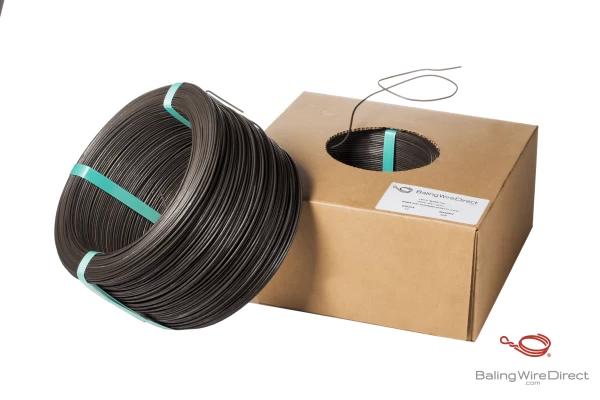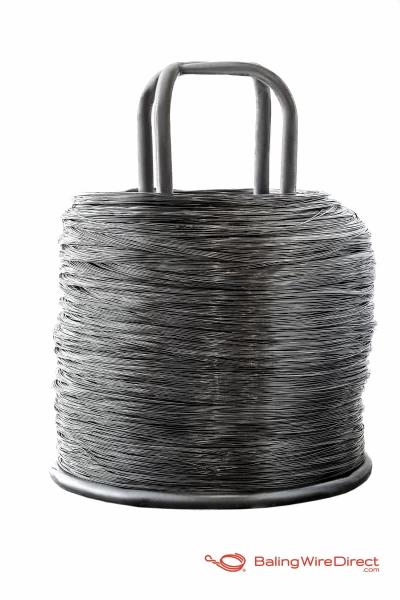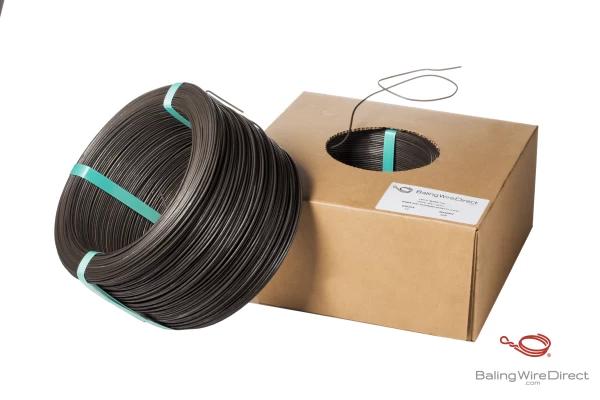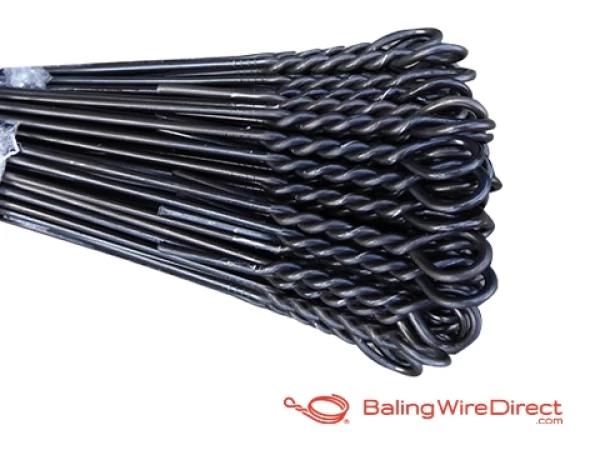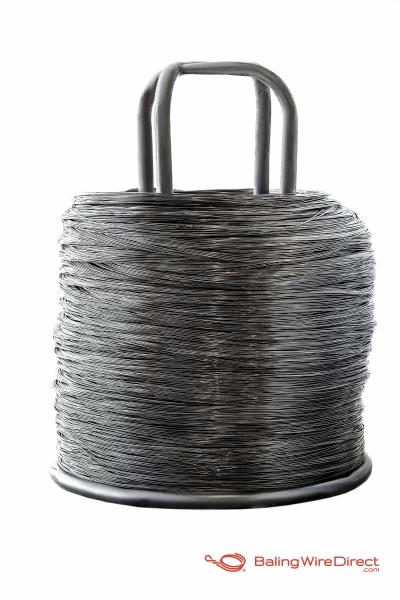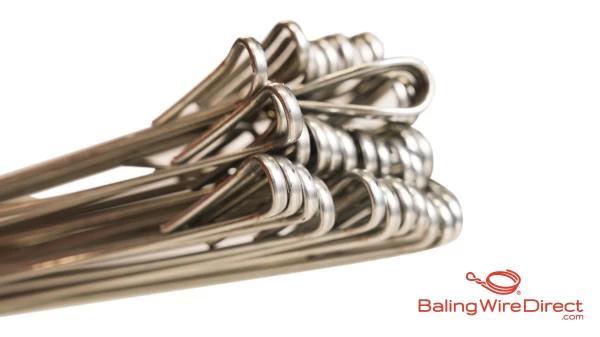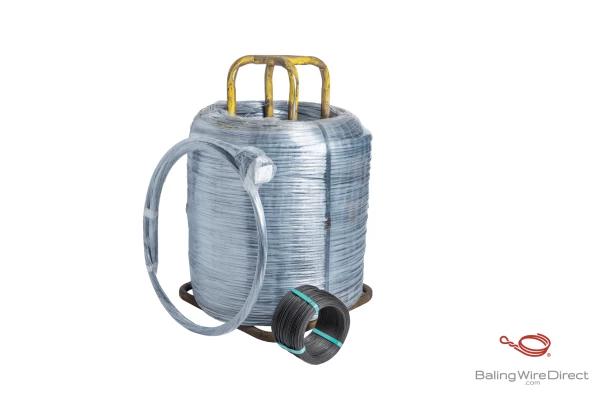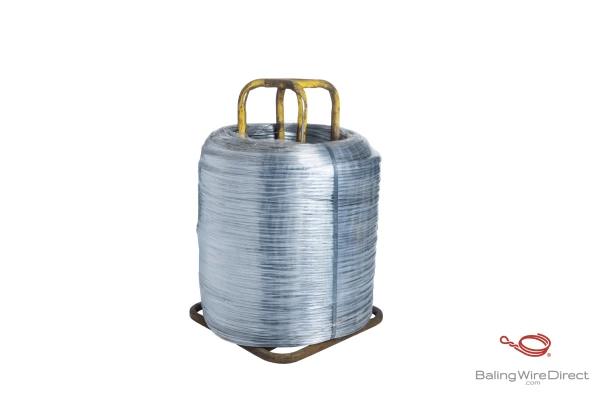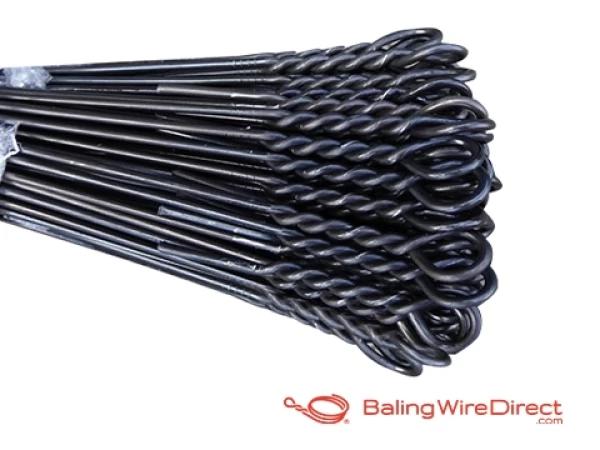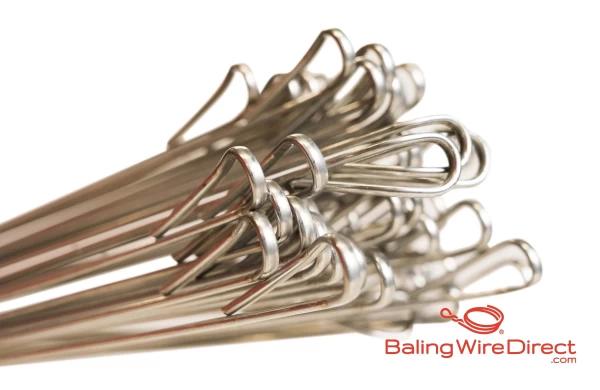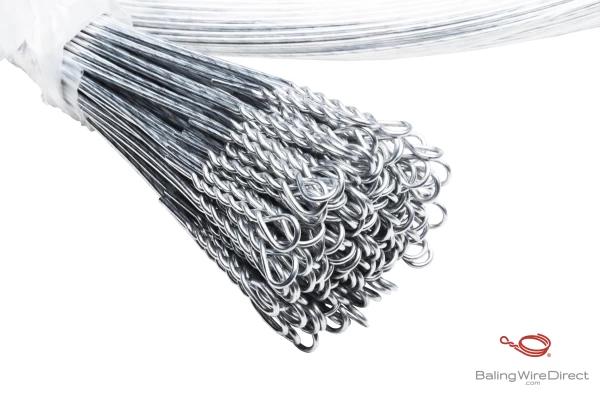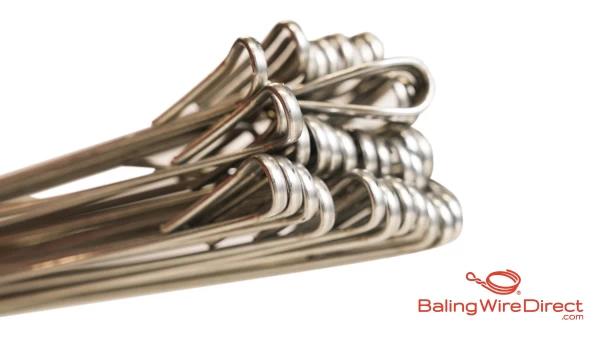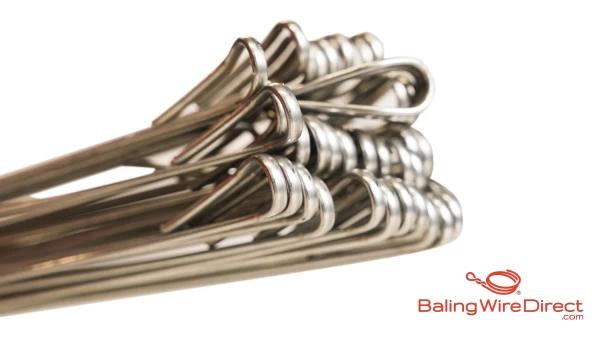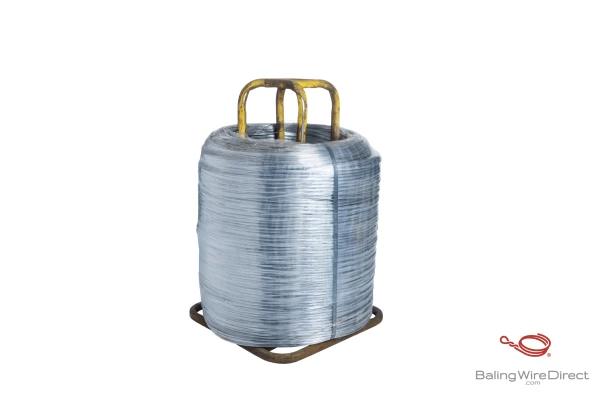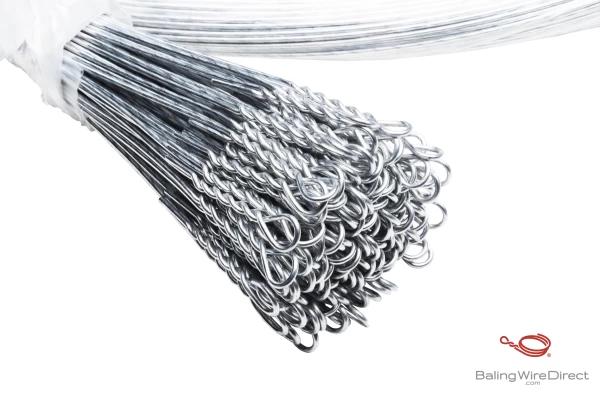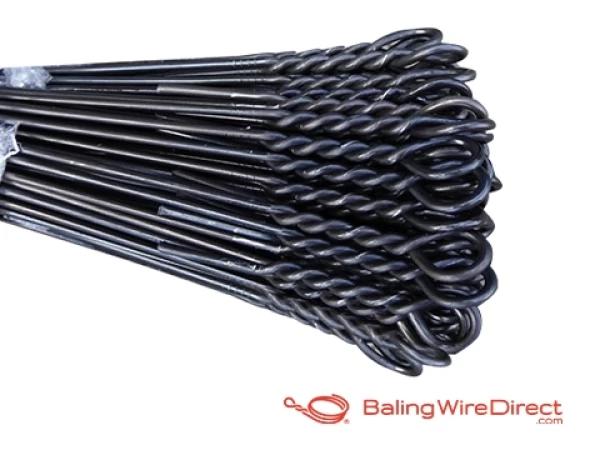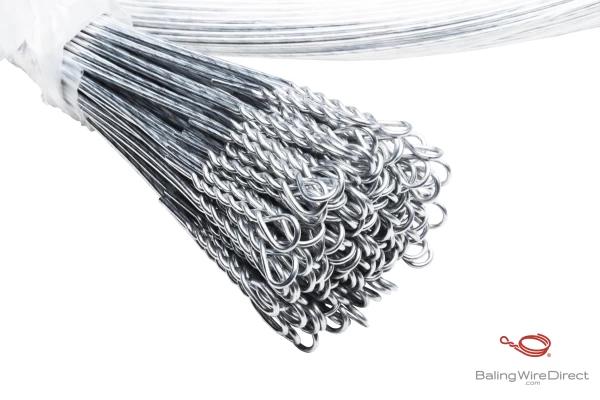Vineyard and orchard baling wire
According to Statista, the fresh fruits market in the United States is projected to grow by 3.73% from 2024–2028. Baling Wire Direct provides the world’s best baling wire products for vineyards and orchards.
Wire for vineyards and orchards
Baling Wire Direct is a key partner to the vineyard and orchard industries, providing high-quality, durable, and cost-effective baling wire. Founded in 2015, we are dedicated to serving customers with high-quality baling wire products while maintaining our commitment to the environment.
Vineyards and orchards use our galvanized baling wire for trellises, tree supports, and other uses. The galvanized coating discourages oxidation and is available in a Class 1 or Class 3 zinc coating.
Our environmental commitment is reflected in our manufacturing process. We avoid using harsh chemicals during manufacturing, opting instead to use a mechanical descaling process to prepare our wire for drawing. This process reduces the environmental impact of production and keeps our dedicated team safe.
But our commitment to the environment extends beyond our manufacturing process. We also promote the recycling of baling wire. Recycling these materials helps to preserve natural resources and reduce carbon emissions.
We offer a variety of baling wire types suitable for all vineyard and orchard applications. These include galvanized wire, black annealed wire, and hi-tensile wire. We're not just providing a product. We're supporting the agriculture industry's mission and contributing to a more sustainable future.
Vineyard and orchard industry forecast
The industry outlook for American vineyards is generally positive. The wine market in the United States is expected to grow annually by about 4.24% from 2024–2028, with the market revenue amounting to $39.0 billion in 2024.
According to the National Association of American Wineries, the US wine industry is the largest of its kind in the world, with California producing 85% of all US wine. The US also leads the world in wine consumption. In 2018, US wine exports reached $1.46 billion in value, with 95% of exported wine coming from California.
However, there are some challenges facing the industry. For instance, the wine industry has seen a decline in consumption among younger demographics, with consumers older than 60 being the only growth segment. This trend could potentially impact the long-term growth of the industry.
American orchards are a component of the agriculture sector. Moving forward, the outlook for American agriculture is mixed. The 2023 season saw increased production of several fruits, but decreased production of peaches, tart cherries, and cranberries due to weather events.
Labor shortages and rising costs are significant market challenges. Labor shortages within agriculture are spurring mechanization and have caused the number of H-2A visa certifications to quadruple over the past two decades. Inflation has also increased the cost of raw materials and shipping, further stressing the industry. Despite challenging circumstances, the agriculture sector is still forecast to achieve moderate growth moving forward.
What is baling wire used for in vineyards and orchards?
Our galvanized stem wire is used in vineyards and orchards in the following ways:
- Support vine and tree growth. Baling wire is used to create trellising systems that support for the growth of vines and trees.
- Harvesting. Structured trellising makes it easier for workers to access and collect the fruits.
- Fencing and boundaries. Galvanized wire can be used to create fences and boundaries in vineyards and orchards. This helps in demarcating different sections of land and protecting the crops from animals.
- Hanging equipment. In some cases, baling wire is used to hang equipment, such as planters and watering lines, in vineyards and orchards.
What is the best wire for grapevines?
The best wire for grapevines is generally considered to be either 10 or 11 gauge high-tensile galvanized wire. This type of wire is strong enough to support the weight of the vine and durable enough to last for many years. Galvanized wire is corrosion resistant, which makes it ideal for outdoor use. Grapevine trellises typically consist of 1–3 wires, with the top wire strung between 4–6 feet above the ground. The number of wires used will vary depending on the training system.
Baling wire versus poly twine
Poly twine is also sometimes used in vineyards, but galvanized wire is better for the following reasons:
- Strength and durability. Galvanized wire is stronger than poly twine, making it more capable of withstanding the grapevine’s fruit weight.
- Longevity. Galvanized wire is made from steel and has a corrosion-resistant zinc coating to withstand the elements.
Versatility. Galvanized wire is great for many applications in vineyards, such as repairs, fencing, hanging equipment, and more.
Galvanized wire for trellising crops
Galvanized wire is used as a support structure for plants, allowing them to grow vertically and optimize space. This is particularly beneficial for crops such as peas, tomatoes, and cucumbers (and, of course, grapes).
In vineyards, wire is fastened by ties and hooks to posts, espaliers, and counter-espaliers, providing a sturdy support for the vines. The strength and durability of our galvanized wire make it an ideal choice, since it can withstand the weight of the growing vines and the fruits they bear.
Training fruit trees with galvanized wire
Baling wire is a versatile tool in permaculture practices. Its strength and versatility make it an ideal choice in the training of fruit trees. The use of baling wire in training fruit trees involves bending branches down and securing them close to the trunk and ground. This method encourages the branches to grow in a more horizontal direction, leading to stronger branches that are less likely to break under the fruit weight.
Our vineyard and orchard baling wire sizes
Baling Wire Direct offers various types of wire suitable for use in vineyards and orchards. We manufacture wire in a wide variety of common sizes.
Gauge is the standard way of sizing baling wire. Wire gauge is inversely related to diameter, meaning that a smaller wire diameter corresponds to a higher gauge wire.
- Our hi-tensile galvanized baling wirecomes in 11 and 12 gauge.
Our regular galvanized baling wire comes in 11, 12, 13, and 14 gauge.
References
Statista. (2024, 01 08). Wine - United States. Statista. Retrieved January 8, 2024, from https://www.statista.com/outlook/cmo/alcoholic-drinks/wine/united-states
Wine Institute Wines Vines Analytics. (2017, 01 01). United States Wine and Grape Industry FAQS. WineAmerica. Retrieved January 8, 2024, from https://wineamerica.org/policy/by-the-numbers/
Simnitt, S., & Martin, P. (2022, December 28). U.S. Fruit and Vegetable Industries Try To Cope With Rising Labor Costs. USDA ERS. Retrieved January 8, 2024, from https://www.ers.usda.gov/amber-waves/2022/december/u-s-fruit-and-vegetable-industries-try-to-cope-with-rising-labor-costs/
Statista. (2024, 01 08). Wine - United States. Statista. Retrieved January 8, 2024, from https://www.statista.com/outlook/cmo/alcoholic-drinks/wine/united-states
Further Reading
What is the AWG size chart?
View DetailsWhy is wire gauge important?
View DetailsWire gauge vs diameter
View DetailsDoes galvanized wire rust?
View DetailsWhat is Class 3 galvanization?
View DetailsHow is baling wire made?
View DetailsWhat is wire elongation?
View Details
